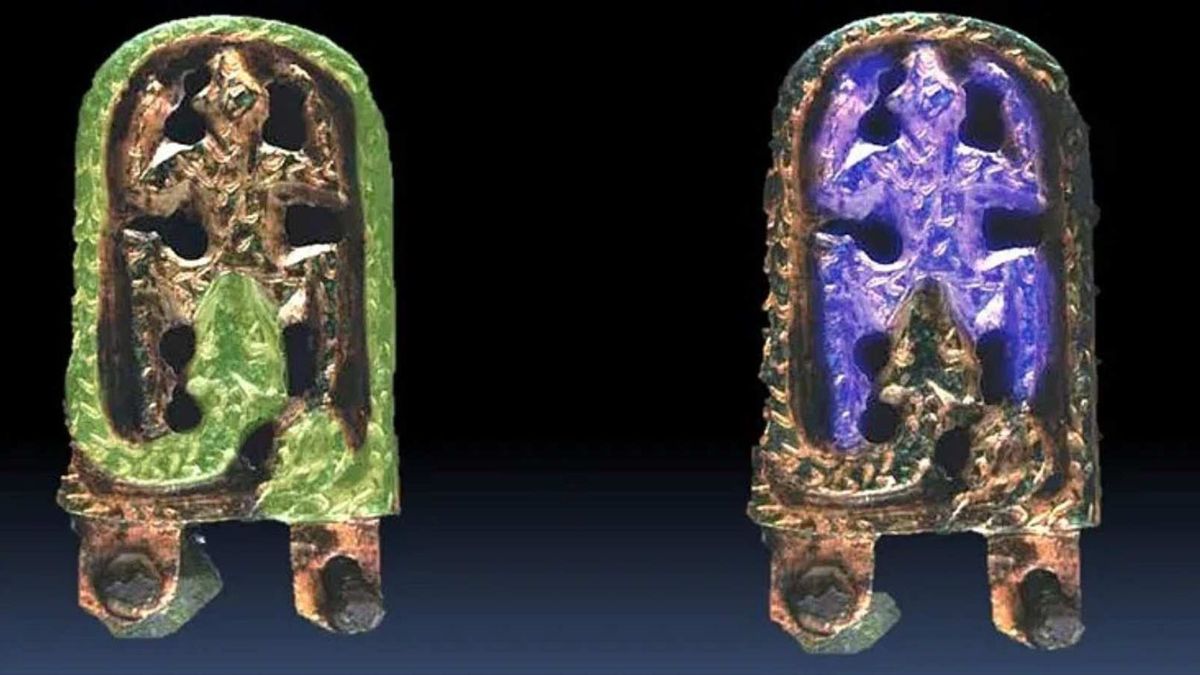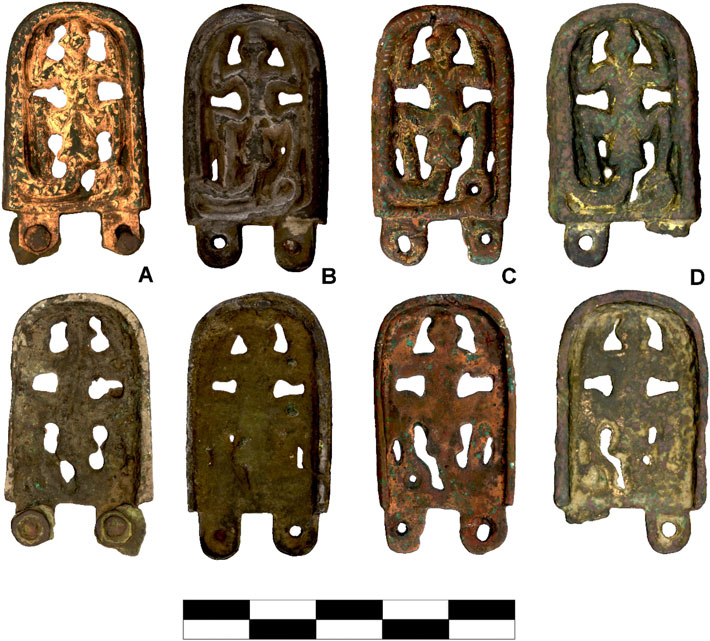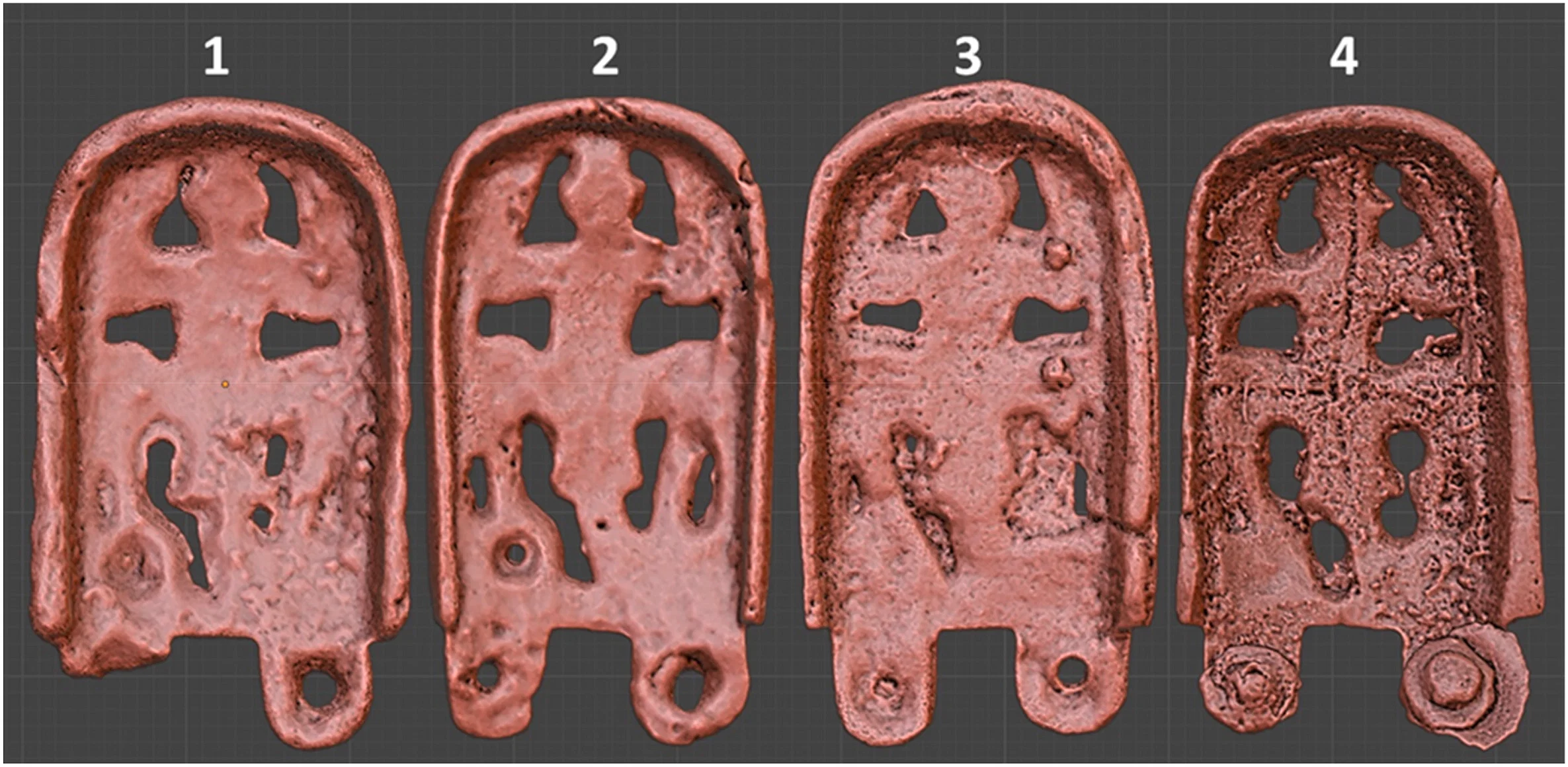In a fascinating archaeological discovery, a medieval belt buckle depicting a dragon or snake devouring a frog has been unearthed in the Czech Republic. This artifact, which has puzzled archaeologists, may be linked to an unknown pagan cult that spanned central Europe. The find has opened up new avenues of exploration into early medieval symbolism and cultural connections.
The Unique Discovery

The bronze belt buckle was found by a metal detectorist near the village of Lány, close to the borders with Austria and Slovakia, approximately 30 miles (50 kilometers) south of Brno. Initially thought to be unique, the design has since been identified in similar artifacts found in Germany, Hungary, and other parts of the Czech Republic. This has led archaeologists to propose the existence of a previously unknown pagan cult that connected various regions in central Europe before the spread of Christianity.
Pagan Symbolism and Cultural Connections
The central motif of the buckle—a dragon or snake devouring a frog-like creature—appears in Germanic, Avar, and Slavic mythology. Jiří Macháček, an archaeologist at Masaryk University in Brno, noted that such symbols might have held significant spiritual meaning for the diverse peoples of central Europe during the early Middle Ages. This imagery, Macháček suggests, connected different regions on a spiritual level, illustrating the cultural and religious diversity of the time.
Archaeological Findings

The belt buckle from Lány is not an isolated find. Similar artifacts have been discovered in Iffeldorf, Germany; Zsámbék, Hungary; and Nový Bydžov, Czech Republic. These artifacts, detailed in a study published in the January issue of the Journal of Archaeological Science, highlight a broader cultural phenomenon.
The Avars and Their Influence
Research suggests that such belt fittings were produced in Central Europe during the seventh and eighth centuries and were typically worn by the Avars, a nomadic people from the Eurasian Steppe who settled in the Carpathian Basin. The Avars established a khaganate over much of Central Europe, influencing the fashions and cultural practices of the Slavs and other local peoples.
Advanced Analysis Techniques

Modern analysis techniques, including X-ray fluorescence and scanning electron microscopy, revealed that the belt buckles were heavily gilded and made from copper mined in the Slovak Ore Mountains. Virtual 3D modeling indicated that some of the buckles were likely produced in the same workshop or from a common model using the lost wax method of casting bronze. These findings suggest a sophisticated level of craftsmanship and a shared cultural tradition.
Interpreting the Symbolism
The exact meaning of the dragon or snake devouring the frog remains a mystery. However, the researchers propose that this imagery may relate to common pagan creation myths, representing the conflict between opposing forces. Additionally, the interaction between the snake and frog might be linked to fertility cult practices, adding another layer of complexity to the interpretation of these artifacts.
Conclusion
The discovery of the medieval belt buckle in the Czech Republic, along with similar artifacts found across central Europe, sheds light on a potentially unknown pagan cult and the interconnectedness of early medieval societies. This find not only enriches our understanding of the cultural and spiritual life of the time but also highlights the intricate craftsmanship and symbolic richness of early medieval artifacts. Further research into these fascinating objects may uncover more about the beliefs and practices of the people who created and used them.
